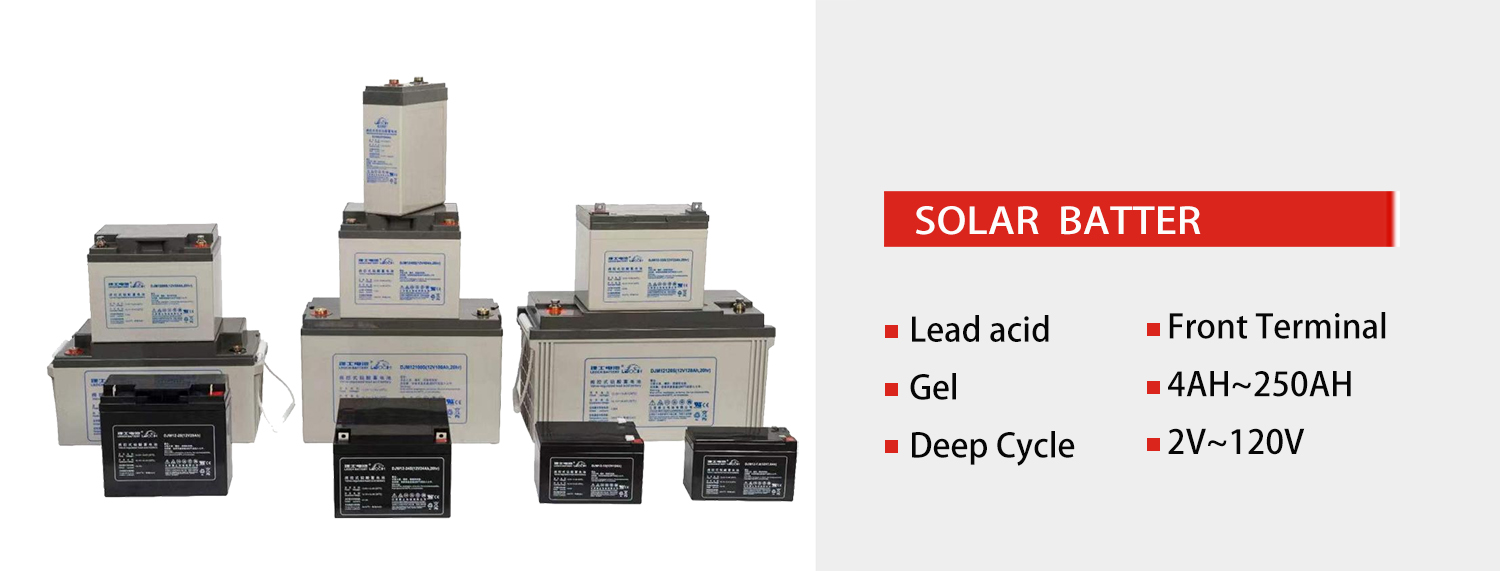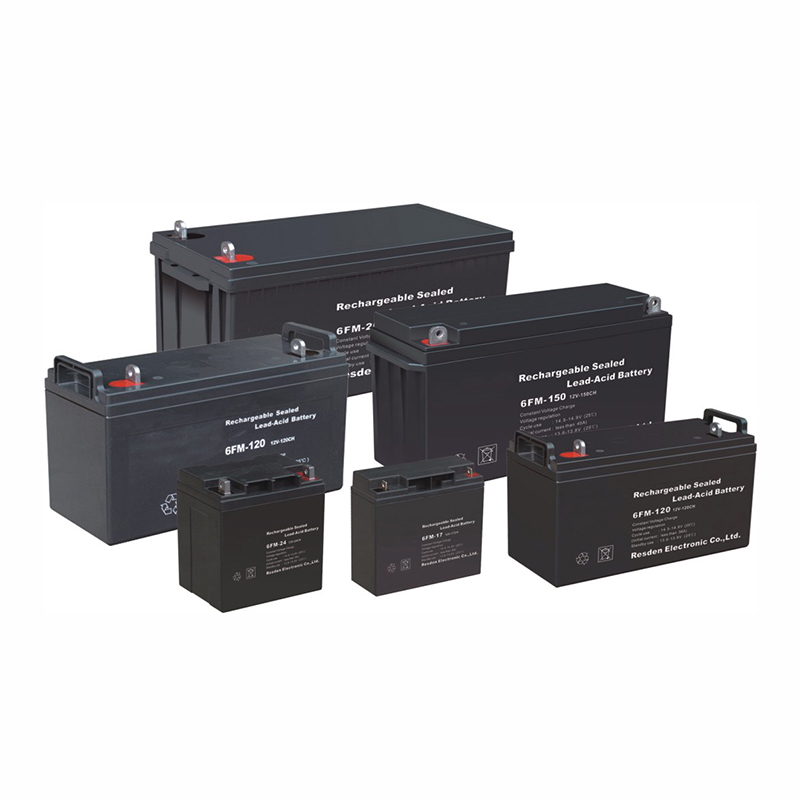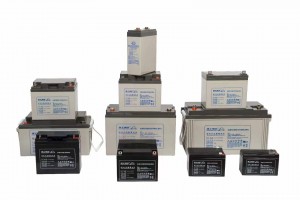Maintenance-free battery

1. Battery matching brand selection (recommended)
Imports: German Sunshine, German Pine, German NPP, American Haizhi, American NB
Joint venture: German Reston, Shenyang Panasonic, Japan Yuasa, American Hercules, American Apex, American Santak
Domestic: Wuxi Huizhong, Jiangxi Great, Hong Kong Autodo, Harbin Jiuzhou
2.Capacity specification (single)
2V/6V/12V
7AH,12AH,17AH,24AH,38AH,50AH,65AH,80AH,100AH,120AH,150AH,200AH,
40AH,65AH,100AH,200AH,250AH,300AH,400AH,500AH,650AH,800AH,1000AH,,1600AH,2000AH,3000AH
3. Quantity selection
The rated voltage of a single battery cell below 200AH (including 200AH) is 12V, 18 batteries can be selected in the 220V system, and 9 batteries can be selected in the 110V system; 108 batteries can be used in 220V system, 54 batteries can be used in 110V system; 102~104 batteries can be used in 220V system without voltage regulator, and 51~52 batteries can be used in 110V system.
4. Capacity selection
Accident capacity calculation formula; accident capacity = accident load × accident time
Accident load: In the event of an accident, the relay protection load current in the substation, the load current of the signal screen, the load current of the accident lighting, and the sum of the load current of the direct drive.
Accident time: that is, in an accident state, the time that the battery pack needs to be supplied with extra power.
5. Calculation of battery pack capacity
According to the discharge characteristics of the maintenance-free lead-acid battery (refer to the instructions of each battery manufacturer), the capacity of the selected battery can be set to be 2 to 3 times the accident capacity. Calculation of battery pack impulse (instantaneous) current: The maximum impulse (instantaneous) current that the battery pack can provide is generally 3 times the rated capacity of the maintenance-free battery.
6. Charge and discharge mode and service life
1. Cyclic charge and discharge mode
■If the device is connected to the power supply, it should leave the power supply and be powered by the battery after the charging is saturated. In this case, the cyclic charging and discharging method should be selected.
■ The maximum voltage provided by the charging machine during cyclic charging should be limited; the charging voltage of 2V battery is 2.35-2.45V; the charging voltage of 6V battery is 7.05-7.35V; the charging voltage of 12V battery is 14.1-14.7V. The maximum charging current is not more than 25%A of the rated capacity value.
■Stop charging immediately when the charging is saturated, otherwise the battery will be damaged or damaged.
■ When charging, the battery should not be turned upside down.
■ Cycle life depends on the depth of each discharge, the greater the depth of discharge in each cycle, the fewer times the battery can be cycled. 2. Float charging mode
■ If the device is always connected to the power supply and is in the charging state, but only when the external power supply stops, it is powered by the battery. In this case, the floating charging mode should be selected.
■The maximum charging voltage of the floating charging machine should be strictly controlled: the floating charging voltage at 25°C is 2.26-2.30V per cell, and the maximum charging current is not 25%A of the rated capacity.
■The service life of the float is mainly affected by the float voltage and the ambient temperature. The higher the float voltage, the shorter the service life.
3. Discharge
During discharge, the terminal voltage of the battery is lower than the specified termination voltage or continuously discharged to the termination voltage for many times (no charging between two discharges) is overdischarge. Over-discharge will cause serious damage to the battery and end the battery life early. The discharge current and termination voltage values are as follows.
| Discharge current | termination voltage(volts/cell) | Discharge current | Termination voltage (volts/cell) |
| Less than 0.05CA | 1.80 | 0.26-1CA | 1.60 |
| 0.05-0.10CA | 1.75 | 3CA | 1.30 |
| 0.11-0.25CA | 1.70 | more than the 3CA | Consult the relevant technical personnel |
7.Technical parameter table
|
Product number WZ-GZDW series |
enter Power (kVA) |
control bus |
Rectifier module |
closing bus |
feed back |
Battery |
Complete set of cabinets (units) |
|||||
|
Bus voltage (V) |
Bus current (A) |
capacity |
quantity |
Instantaneous current (A) | Instantaneous Voltage (V) |
Control loop |
closing circuit | Battery capacity (AH) | Number of batteries (only) | |||
|
20AH/220V |
6.5 |
220 |
5 |
5 |
3 |
>60 |
200 |
5 |
4 |
20 |
18 |
1 |
|
38AH/220V |
6.5 |
220 |
5 |
5 |
3 |
>140 |
200 |
5 |
4 |
38 |
18 |
1 |
|
50AH/220V |
7.7 |
220 |
10 |
5 |
3 |
>200 |
200 |
5 |
4 |
50 |
18 |
1 |
|
65AH/220V |
7.7 |
220 |
10 |
5 |
3 |
>200 |
200 |
5 |
4 |
65 |
18 |
2 |
|
100AH/220V |
10.3 |
220 |
10 |
10 |
3 |
>200 |
200 |
5 |
4 |
100 |
18 |
2 |
|
120AH/220V |
11.5 |
220 |
10 |
10 |
3 |
>240 |
200 |
5 |
4 |
120 |
18 |
2 |
|
200AH/220V |
18 |
220 |
20 |
20 |
3 |
>400 |
200 |
5 |
4 |
200 |
108 |
3 |
|
250AH/220V |
26.6 |
220 |
30 |
20 |
4 |
>500 |
200 |
10 |
9 |
250 |
108 |
3 |
|
300AH/220V |
28.5 |
220 |
30 |
20 |
4 |
>600 |
200 |
10 |
9 |
300 |
108 |
5 |
|
420AH/220V |
33.3 |
220 |
50 |
20 |
6 |
>840 |
200 |
10 |
9 |
420 |
108 |
5 |
|
500AH/220V |
36.5 |
220 |
50 |
20 |
6 |
>980 |
200 |
10 |
9 |
490 |
108 |
7 |
|
600AH/220V |
43.8 |
220 |
60 |
20 |
8 |
>1200 |
200 |
10 |
9 |
600 |
108 |
7 |
|
800AH/220V |
58.5 |
220 |
60 |
20 |
8 |
>1600 |
200 |
10 |
9 |
800 |
108 |
11 |
|
1000AH/220V |
73 |
220 |
100 |
20 |
12 |
>2000 |
200 |
10 |
9 |
1000 |
108 |
12 |








